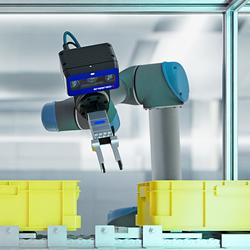Toshiba Launches a High Speed, Dual Polarity Input Photocoupler for Servo Motors and PLCs
Works with both plus and minus LED currents
TOKYO--Toshiba Corporation (TOKYO:6502) today announced that it has launched "TLP2391", a high-speed photocoupler for servo motors and programmable logic controllers (PLCs) which works with both plus and minus LED currents. Mass production is scheduled to start in December.
PLC applications accept one of two different polarity inputs: sink logic input and source logic input. The "TLP2391" supports both sink and source logic by combining two LEDs in inverse parallel, eliminating the need for a bridge circuit. The product supports 10Mbps high speed communications, twice as fast as other Toshiba dual input photocouplers1 allowing use in communications interfaces in industrial applications. The IC's 2.3mA low input current drive (@ VCC = 3.3V) and 1mA low supply current contribute to energy efficiency.
Applications
Programmable logic controllers (PLC), servo motors, and industrial automation equipment
Key Features of New Product
• Operating temperature: Topr = -40 to 125°C
• Supply voltage: VCC = 2.7 to 5.5V
• Supply current: ICC = 1mA
• Threshold input current:
IFHL = 2.3mA (VCC = 3.3V)
IFHL = 2.5mA (VCC = 5.0V)
• Propagation delay time: tpHL / tpLH = 100ns (max)
• Pulse width distortion: |tpHL-tpLH| = 30ns (max)
• Propagation delay skew: tpsk = 40ns (max)
Note:
[1]: Comparison with 5Mbps speed of Toshiba dual input photocouplers, "TLP2395" and "TLP2398".
For more information about the product, please visit:
http://www.semicon.toshiba.co.jp/info/lookup.jsp?pid=TLP2391&lang=en
Featured Product

3D Vision: Ensenso B now also available as a mono version!
This compact 3D camera series combines a very short working distance, a large field of view and a high depth of field - perfect for bin picking applications. With its ability to capture multiple objects over a large area, it can help robots empty containers more efficiently. Now available from IDS Imaging Development Systems. In the color version of the Ensenso B, the stereo system is equipped with two RGB image sensors. This saves additional sensors and reduces installation space and hardware costs. Now, you can also choose your model to be equipped with two 5 MP mono sensors, achieving impressively high spatial precision. With enhanced sharpness and accuracy, you can tackle applications where absolute precision is essential. The great strength of the Ensenso B lies in the very precise detection of objects at close range. It offers a wide field of view and an impressively high depth of field. This means that the area in which an object is in focus is unusually large. At a distance of 30 centimetres between the camera and the object, the Z-accuracy is approx. 0.1 millimetres. The maximum working distance is 2 meters. This 3D camera series complies with protection class IP65/67 and is ideal for use in industrial environments.
